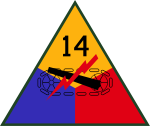Gamecock Fanatics
You are using an out of date browser. It may not display this or other websites correctly.
You should upgrade or use an alternative browser.
You should upgrade or use an alternative browser.
Countdown to Kickoff II: The Final 24 Days
- Thread starter Swayin
- Start date
USS Ticonderoga, CV-14.
_refueling_from_USS_Ashtabula_(AO-51)_off_Vietnam_c1966.jpg)
https://en.wikipedia.org/wiki/USS_Ticonderoga_(CV-14)USS Ticonderoga (CV/CVA/CVS-14) was one of 24 Essex-class aircraft carriers built during World War II for the United States Navy. The ship was the fourth US Navy ship to bear the name, and was named after the capture of Fort Ticonderoga in the American Revolutionary War. Ticonderoga was commissioned in May 1944, and served in several campaigns in the Pacific Theater of Operations, earning five battle stars. Decommissioned shortly after the end of the war, she was modernized and recommissioned in the early 1950s as an attack carrier (CVA), and then eventually became an antisubmarine carrier (CVS). She was recommissioned too late to participate in the Korean War, but was very active in the Vietnam War, earning three Navy Unit Commendations, one Meritorious Unit Commendation, and 12 battle stars.
Ticonderoga differed somewhat from the earlier Essex-class ships in that she was 16 ft (4.9 m) longer to accommodate bow-mounted anti-aircraft guns. Most subsequent Essex-class carriers were completed to this "long-hull" design and were apparently referred to as the Ticonderoga class. At the end of her career, after a number of modifications, she was said to be in the Hancock class according to the Naval vessel register.
Attacks on South Japanese islands
The three task groups of TF 38 completed their transit during the night of 20–21 January. The next morning, aided by favorable flight conditions, their aircraft hit airfields on Formosa, in the Pescadores, and at Sakishima Gunto. While it allowed American flight operations to continue through the day, it also allowed for Japanese kamikaze operations.
Just after noon, a single-engine Japanese aircraft scored a hit on Langley with a glide-bombing attack. Seconds later, a kamikaze swooped out of the clouds and plunged toward Ticonderoga. The aircraft crashed through the ship's flight deck abreast of the No. 2 5 in (130 mm) mount, and its bomb exploded just above her hangar deck. Several aircraft stowed nearby erupted into flames and men were killed.
While the crew were ordered into action to save the endangered carrier, Captain Kiefer conned his ship skillfully. First, he changed course to keep the wind from fanning the blaze. Then, he ordered magazines and other compartments flooded to prevent further explosions and to correct a 10° starboard list. Finally, he instructed the damage control party to continue flooding compartments on Ticonderoga's port side which induced a 10° port list which dumped the fire overboard. Firefighters and aircraft handlers completed the dangerous job of dousing the flames and jettisoning burning aircraft.
_listing_21_Jan_1945.jpg/1280px-USS_Ticonderoga_(CV-14)_listing_21_Jan_1945.jpg)
Other kamikazes then assailed the carrier. Her antiaircraft gunners shot down three which all crashed into the sea, but a fourth aircraft struck the carrier's starboard side near the island. Its bomb set more aircraft on fire, riddled her flight deck, and injured or killed another 100 sailors, with Captain Kiefer one of the wounded. Ticonderoga's crew continued their efforts and were spared further attacks. They brought her fires completely under control not long after 1400, and Ticonderoga retired.
Awards
Ticonderoga received five battle stars during World War II and three Navy Unit Commendations, one Meritorious Unit Commendation, and 12 battle stars during the Vietnam War.
Last edited by a moderator:
USS Dixie, AD-14.
_underway_off_the_coast_of_southern_California_on_1_April_1976_(6392044).jpg/1280px-USS_Dixie_(AD-14)_underway_off_the_coast_of_southern_California_on_1_April_1976_(6392044).jpg)
_underway_off_the_coast_of_southern_California_on_1_April_1976_(6392044).jpg/1280px-USS_Dixie_(AD-14)_underway_off_the_coast_of_southern_California_on_1_April_1976_(6392044).jpg)
https://en.wikipedia.org/wiki/USS_Dixie_(AD-14)The second USS Dixie (AD-14) was the first of her class of destroyer tender built just before the start of World War II for the U.S. Navy. Her task was to service destroyers in, or near, battle areas and to keep them fit for duty.
World War II
Dixie sailed from Norfolk, Virginia, on 20 June 1940 for Pearl Harbor to serve the destroyers of the Battle Force until October, when she cleared for the West Coast and similar operations at San Diego, California. When the Japanese attacked Pearl Harbor on 7 December 1941, she was undergoing overhaul at Mare Island Navy Yard, and quickly took up the task of readying ships for war service. In March 1942 she returned to Pearl Harbor to tend destroyers and other ships of the Fleet until November.
Dixie alternated between Nouméa and Espiritu Santo in support of the operations in the Solomons from November 1942 to March 1944, then went to the Solomons where she was based at Hathorn Sound. In September she arrived at the huge fleet base at Ulithi, serving there until February 1945. Her essential services were next given at San Pedro Bay, Leyte, where Dixie remained until the end of the war.
_with_destroyers_off_Leyte_in_1945_(NH_905541).jpg/1280px-USS_Dixie_(AD-14)_with_destroyers_off_Leyte_in_1945_(NH_905541).jpg)
She served ships on occupation duty at Okinawa and Shanghai, then returned to the west coast in December 1945.
Post-World War II operations and Korean War
In the summer of 1946, Dixie sailed to Bikini Atoll for atomic weapons experiments, Operation Crossroads. In 1947 and in 1949 she cruised to the Far East and was based at Tsingtao to serve destroyers on patrol off the Chinese coast. Dixie was the last U.S. vessel to leave China when the Communist advance forced the evacuation of Americans from the mainland. It would take 37 years before U.S. naval vessels would once again visit China when USS Rentz (FFG-46), USS Reeves (DLG-24) and USS Oldendorf (DD-972) visited Tsingtao as part of China's new open door policy.
Following her departure from China, she acted as headquarters for the American consul and chargé d'affaires at Hong Kong. She continued her active service alternating flagship duty for Commander, Cruiser Destroyer Force, Pacific Fleet, at San Diego, with tours in the Far East, based on Sasebo, Japan, or Subic Bay, Philippine Islands. During two of these western Pacific tours, she rendered valuable assistance to the ships of the United Nations operating off Korea. In 1959 and again in 1960, in addition to serving at San Diego, she sailed to the Far East to provide tender facilities for the 7th Fleet.
Dixie received five battle stars for Korean War service.
Post-Korean War operations
From about the early 1960s to 1982 Dixie was homeported at Subic Bay in the Philippines where she served as a support ship for destroyers in the 7th Fleet. USS Dixie AD-14 was home ported out of San Diego California 1969–1982 at least and was Flag Ship for COMCRUSDESPAC usually tied up at Pier 4.
Fate
In 1981, she was the first ship to be awarded the First Navy Jack as the ship with the longest active service in the Navy. Dixie was decommissioned and struck from the Naval Vessel Register on 15 June 1982.
Last edited by a moderator:
The 14 Fists of McCluskey
Looking forward to the 44 fists of Beamer this fall.
Looking forward to the 44 fists of Beamer this fall.
Last edited by a moderator:
#14 P Max Runager from Orangeburg, SC (1974-78)
Punting
Year
Punts
Yds
Avg
1974
15
542
36.1
1976
55
2183
39.7
1977
61
2612
42.8
1978
61
2562
42
Tot
192
7899
41.1



RIP, Gamecock.
Punting
Year
Punts
Yds
Avg
1974
15
542
36.1
1976
55
2183
39.7
1977
61
2612
42.8
1978
61
2562
42
Tot
192
7899
41.1



https://gamecocksonline.com/news/2017/7/2/Gamecocks_Mourn_the_Passing_of_Max_RunagerThe University of South Carolina mourns the loss of former Gamecock great, Max Runager, who passed away on Friday. Runager was 61 years old.
Runager, who starred at Orangeburg-Wilkinson High School, was an outstanding punter for coach Jim Carlen's teams of the late 1970s and was voted to Carolina's all-time team in 1992. He punted in the NFL from 1979-1989 for Philadelphia, San Francisco and Cleveland, including for two Super Bowl teams - the Eagles in 1980 and the 49ers in 1984.
A 2007 inductee into the South Carolina Athletic Hall of Fame, 2013 inductee into the USC Athletic Hall of Fame and an SEC Football Legends pick also in 2013, Runager is described as arguably the best punter in Carolina football history.
RIP, Gamecock.
USS Schley, APD-14. Formerly DD-103.
_underway_off_Mare_Island_in_October_1943.jpg)
_underway_off_Mare_Island_in_October_1943.jpg)
https://en.wikipedia.org/wiki/USS_Schley_(DD-103)World War II
With Europe again at war and war threatening in the Pacific Ocean, Schley was recommissioned at San Diego on 3 October 1940. She arrived at Pearl Harbor on 17 December for patrols and exercises there the next year. When Japanese planes attacked Pearl Harbor on 7 December 1941, the destroyer was moored in a nest of ships undergoing overhaul and, as her guns were dismantled, was able to do little besides reply with small arms fire. Her overhaul was rushed to completion; and, on 20 December, she took up a patrol station off the channel approaching Pearl Harbor. She operated there and off Honolulu for almost a year. On 13 December 1942, she departed Hawaiian waters for conversion into a fast transport at the Puget Sound Navy Yard. Schley was reclassified APD-14 effective 6 February 1943.
Schley returned to Pearl Harbor on 22 February and proceeded to the New Hebrides, arriving at Espiritu Santo on 27 March. In the South Pacific, she trained intensively with Marine raiders and other troops, acted as a patrol and escort vessel, and operated as a transport between the Solomons, the New Hebrides, American Samoa, and New Zealand.
Schley first participated in a landing under combat conditions on 30 June at New Georgia. With two other APDs and some smaller ships, she put troops ashore at Wickham Anchorage at the southwest end of Vangunu. On 5 July, she landed a second group of troops at Rice Anchorage, New Georgia. During this operation, a Japanese reinforcement group belatedly arrived on the scene and, in retiring, sank USS Strong with a long-range torpedo shot. After another trip to Rice Anchorage with supplies and ammunition, Schley sailed from Espiritu Santo on 1 August for overhaul at Mare Island.
Awards
Schley received 11 battle stars for her duty in World War II.
Last edited by a moderator:












